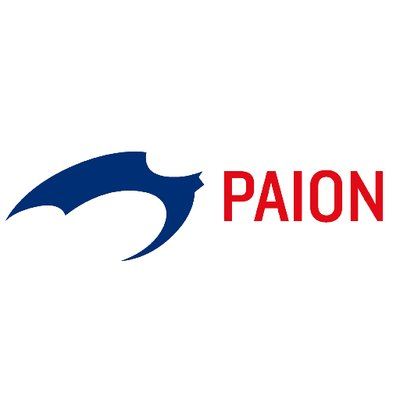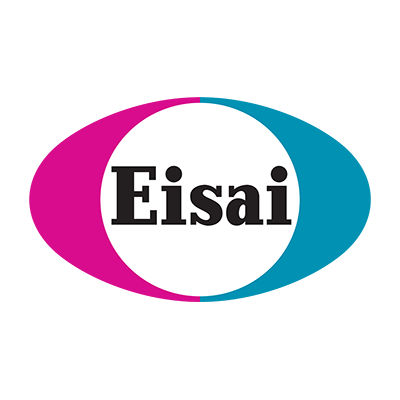预约演示
更新于:2025-08-29

Yichang Humanwell Pharmaceuticals Co., Ltd.
更新于:2025-08-29
概览
标签
其他疾病
神经系统疾病
消化系统疾病
小分子化药
化学药
合成多肽
疾病领域得分
一眼洞穿机构专注的疾病领域
暂无数据
技术平台
公司药物应用最多的技术
暂无数据
靶点
公司最常开发的靶点
暂无数据
| 排名前五的药物类型 | 数量 |
|---|---|
| 小分子化药 | 42 |
| 化学药 | 4 |
| 合成多肽 | 1 |
关联
47
项与 宜昌人福药业有限责任公司 相关的药物作用机制 GABAA receptor激动剂 |
原研机构 |
最高研发阶段批准上市 |
首次获批国家/地区 日本 |
首次获批日期2020-01-23 |
作用机制 GABAA receptor激动剂 |
在研机构 |
原研机构 |
最高研发阶段批准上市 |
首次获批国家/地区 美国 |
首次获批日期2008-12-08 |
234
项与 宜昌人福药业有限责任公司 相关的临床试验CTR20253148
盐酸帕洛诺司琼软胶囊人体生物等效性研究
主要研究目的:研究健康参与者餐后状态下单次口服受试制剂盐酸帕洛诺司琼软胶囊(规格:0.5mg,宜昌人福药业有限责任公司持证)与参比制剂盐酸帕洛诺司琼软胶囊(商品名:Aloxi,规格:0.5mg;持证商:Helsinn Birex Pharmaceuticals Ltd.)后体内的药代动力学特征,评价餐后状态下口服两种制剂的生物等效性。
次要研究目的:研究受试制剂盐酸帕洛诺司琼软胶囊0.5mg和参比制剂(商品名:Aloxi)0.5mg在健康参与者中的安全性。
开始日期2025-08-25 |
申办/合作机构 |
CTR20252489
奥氮平萨米多芬片人体生物等效性研究
主要研究目的:研究健康研究参与者在空腹状态下单次口服受试制剂奥氮平萨米多芬片【规格:5mg/10mg(奥氮平/萨米多芬),宜昌人福药业有限责任公司生产】与参比制剂奥氮平萨米多芬片【商品名:LYBALVI,规格:5mg/10mg(奥氮平/萨米多芬);持证商:Alkermes,Inc.】的药代动力学,评价空腹状态口服两制剂的生物等效性。
次要研究目的:研究受试制剂奥氮平萨米多芬片5mg/10mg(奥氮平/萨米多芬)和参比制剂奥氮平萨米多芬片(商品名:LYBALVI)5mg/10mg(奥氮平/萨米多芬)在健康研究参与者中的安全性。
开始日期2025-07-18 |
申办/合作机构 |
CTR20252620
佩玛贝特片(0.1mg)在中国健康受试者中空腹给药条件下随机、开放、单剂量、两序列、两周期、双交叉生物等效性试验
主要研究目的:按有关生物等效性试验的规定,选择興和株式会社为持证商的佩玛贝特片(商品名:PARMODIA,规格:0.1mg)为参比制剂,对宜昌人福药业有限责任公司生产并提供的受试制剂佩玛贝特片(规格:0.1mg)进行空腹给药人体生物等效性试验,比较受试制剂中药物的吸收速度和吸收程度与参比制剂的差异是否在可接受的范围内,评估两种制剂在空腹给药条件下的生物等效性。
次要研究目的:观察健康志愿受试者口服受试制剂佩玛贝特片(规格:0.1mg)和参比制剂佩玛贝特片(商品名:PARMODIA,规格:0.1mg)的安全性。
开始日期2025-07-10 |
申办/合作机构 |
100 项与 宜昌人福药业有限责任公司 相关的临床结果
登录后查看更多信息
0 项与 宜昌人福药业有限责任公司 相关的专利(医药)
登录后查看更多信息
20
项与 宜昌人福药业有限责任公司 相关的文献(医药)2025-04-22·ACS Omega
Pyrolytic Transformation of Zn-TAL Metal–Organic Framework into Hollow Zn–N–C Spheres for Improved Oxygen Reduction Reaction Catalysis
Article
作者: Konuhova, Marina ; Leis, Jaan ; Ciupiński, Łukasz ; Pozdnjakova, Jekaterina ; Douglin, John C. ; Kikas, Arvo ; Yusibova, Gulnara ; Ivaništšev, Vladislav ; Oras, Sven ; Dekel, Dario R. ; Plocinski, Tomasz ; Popov, Anatoli I. ; Kongi, Nadezda ; Paaver, Peeter ; Kaljuvee, Tiit ; Käärik, Maike ; Aruväli, Jaan ; Vetik, Iuliia ; Kisand, Vambola ; Ping, Kefeng
Metal-organic frameworks (MOFs) are promising precursors for creating metal-nitrogen-carbon (M-N-C) electrocatalysts with high performance, though maintaining their structure during pyrolysis is challenging. This study examines the transformation of a Zn-based MOF into an M-N-C electrocatalyst, focusing on the preservation of the carbon framework and the prevention of Zn aggregation during pyrolysis. A highly porous Zn-N-C electrocatalyst derived from Zn-TAL MOF (where TAL stands for the TalTech-UniTartu Alliance Laboratory) was synthesized via optimized pyrolysis, yielding notable electrocatalytic activity toward oxygen reduction reaction (ORR). Scanning electron microscopy (SEM) and X-ray diffraction spectroscopy (XRD) analyses confirmed that the carbon framework preserved its integrity and remained free of Zn metal aggregates, even at elevated temperatures. Rotating disc electrode (RDE) tests in an alkaline solution showed that the optimized Zn-N-C electrocatalyst demonstrated ORR activity on par with commercial Pt/C electrocatalysts. In an anion-exchange membrane fuel cell (AEMFC), the Zn-N-C material pyrolyzed at 1000 °C exhibited a peak power density of 553 mW cm-2 at 60 °C. This work demonstrates that Zn-TAL MOF is an excellent precursor for forming hollow Zn-N-C structures, making it a promising high-performance Pt-free electrocatalyst for fuel cells.
2025-03-01·BRITISH JOURNAL OF ANAESTHESIA
Sprouting sympathetic fibres release CXCL16 and norepinephrine to synergistically mediate sensory neuronal hyperexcitability in a rodent model of neuropathic pain
Article
作者: Xin, Wenjun ; Fan, Haiting ; Dong, Bo ; Liang, Zhengkai ; Di, Anjie ; Liu, Feng ; Xu, Ting ; Li, Changlin ; Liu, Meng ; Wang, Chen ; Wei, Ming ; Wu, Yan ; Feng, Xia
BACKGROUND:
Chronic neuropathic pain generally has a poor response to treatment with conventional drugs. Sympathectomy can alleviate neuropathic pain in some patients, suggesting that abnormal sympathetic-somatosensory signaling interactions might underlie some forms of neuropathic pain. The molecular mechanisms underlying sympathetic-somatosensory interactions in neuropathic pain remain obscure.
METHODS:
Lumbar sympathectomy was performed in spared nerve injury (SNI) mice or rats, and the up-down method was used to measure the mechanical paw withdrawal threshold. Dorsal root ganglia (DRG) injection and perfusion were used to deliver virus or drugs. Methylated RNA immunoprecipitation sequencing, RNA-sequencing, and immunoelectron microscopy were used to identify neurotransmitters.
RESULTS:
We found that sprouting tyrosine hydroxylase-positive sympathetic fibres in DRG mediated the maintenance of mechanical allodynia after SNI (day 28, P<0.001). We further found that SNI significantly increased the N6-methyladenosine level of CXCL16 messenger RNA (day 28, P<0.001), which was attributable to the reduced N6-methyladenosine demethylase fat mass and obesity-associated protein (P=0.002) and increased interaction with YTHDF1 (P=0.013) in the sympathetic ganglion. Enhanced expression of CXCL16 in the sympathetic ganglia can lead to increases release into the DRG and act synergistically with norepinephrine from sympathetic terminals to enhance DRG neuronal excitability.
CONCLUSIONS:
Norepinephrine and CXCL16 co-released from sympathetic nerve terminals in the DRG synergistically contribute to maintenance of neuropathic pain in a rodent model.
2022-06-01·Neurology and therapy3区 · 医学
Bioavailability and Safety of a New Highly Concentrated Midazolam Nasal Spray Compared to Buccal and Intravenous Midazolam Treatment in Chinese Healthy Volunteers
3区 · 医学
ArticleOA
作者: Huang, Jie ; Duan, Kai-Ming ; Zou, Chan ; Zhang, Xing-Fei ; Li, Li-E ; Zhang, Min ; Yang, Guo-Ping ; Wang, Hui ; Wang, Sai-Ying ; Mao, Miao-Fu ; Yang, Xiaoyan ; Yang, Shuang ; Cui, Chang ; Zhou, Xiang
INTRODUCTION:
Buccal midazolam treatment is licensed in the European Union for prolonged acute convulsive seizures in children and adolescents, but the buccal pathway is often hampered by jaw clenching, hypersalivation, or uncontrolled swallowing. Midazolam formulations that are more secure, reliable, and faster for use are needed in the acute setting. Pharmacokinetics and comparative bioavailability of intranasally administered midazolam and two midazolam intravenous solutions administered buccally or intravenously in healthy adults were evaluated.
METHODS:
In this phase 1, open-label, randomized, single-dose, three-period, three-sequence crossover study, 12 healthy adults (19-41 years) were randomly assigned to receive 2.5 mg midazolam intranasally; 2.5 mg midazolam intravenously; 2.5 mg midazolam buccally. Blood samples were collected for 10 h post dose to determine pharmacokinetic profiles. Adverse events and vital signs were recorded.
RESULTS:
Intranasal administration of 2.5 mg midazolam demonstrated a more rapid median time to Cmax compared to buccal administration of midazolam (Tmax, 12.6 min vs. 45 min; Cmax, 38.33 ng/ml vs. 24.97 ng/ml). The antiepileptic effect of intranasal and buccal midazolam treatment lasted less than 4 h and generally did not differ from intravenously administered midazolam. No serious adverse events or deaths were reported, and no treatment-emergent adverse events led to study discontinuation.
CONCLUSION:
Intranasal administration of midazolam may be a preferable alternative to the currently approve buccal midazolam treatment for prolonged acute convulsive seizures in children and adolescents.
TRIAL REGISTRATION:
This study is registered at the Chinese Clinical Trial [ http://www.chictr.org.cn ] (ChiCTR2000032595) on 3 May, 2020.
394
项与 宜昌人福药业有限责任公司 相关的新闻(医药)2025-08-28
·米内网
精彩内容
日前,人福医药发布公告,其控股子公司宜昌人福药业的注射用苯磺酸瑞马唑仑新增适应症(作为镇静药物用于重症监护期间机械通气时的镇静)获批。米内网数据显示,神经系统药物(化+生)在2024年中国公立医疗机构终端销售额超过900亿元。
注射用苯磺酸瑞马唑仑是由宜昌人福药业联合德国PAION共同开发的新型苯二氮䓬类药物,为超短效GABAa受体激动剂。该产品在此之前已有非气管插管的手术/操作中的镇静和麻醉和全身麻醉诱导与维持2个适应症获批,此次获批新增适应症是作为镇静药物用于重症监护期间机械通气时的镇静。
米内网数据显示,目前注射用苯磺酸瑞马唑仑仅人福医药拥有生产批文,该产品在2024年中国城市公立医院、县级公立医院、城市社区中心及乡镇卫生院(简称中国公立医疗机构)终端销售额超过2亿元,2025年一季度同比增长近40%。
近年中国公立医疗机构终端神经系统药物(化+生)销售情况(单位:万元)
来源:米内网中国公立医疗机构药品终端竞争格局
神经系统药物(化+生)在2024年中国公立医疗机构终端销售规模超过900亿元,人福医药是TOP1集团,销售额增速11连涨。
人福医药表示,此次注射用苯磺酸瑞马唑仑新适应症获批,将有利于扩大该产品的使用范围,给公司带来积极影响。
来源:米内网项目进度数据库
在此之前,人福医药发布公告,其全资子公司武汉人福创新药物研发中心的化药1类新药HW241045片获得临床试验默示许可,拟用于特发性肺纤维化的治疗,目前全球范围内尚无同靶点的药物获批上市。今年以来,人福医药1类新药捷报频传,已有RFUS-949片、HW201877胶囊等7款产品获批临床。
资料来源:公司公告、米内网数据库
注:米内网《中国公立医疗机构药品终端竞争格局》,统计范围是:中国城市公立医院、县级公立医院、城市社区中心以及乡镇卫生院,不含民营医院、私人诊所、村卫生室;上述销售额以产品在终端的平均零售价计算。如有疏漏,欢迎指正!
免责声明:本文仅作医药信息传播分享,并不构成投资或决策建议。本文为原创稿件,转载文章或引用数据请注明来源和作者,否则将追究侵权责任。投稿及报料请发邮件到872470254@qq.com稿件要求详询米内微信首页菜单栏商务及内容合作可联系QQ:412539092
【分享、点赞、在看】点一点不失联哦
上市批准
2025-08-27
8 月 27 日,人福医药发布 2025 上半年业绩报告。报告期内:公司实现营业收入 120.64 亿元,较上年同期减少 6.20%;归属于上市公司股东的净利润 11.55 亿元,较上年同期增长 3.92%;归属于上市公司股东的扣除非经常性损益的净利润 11.30 亿元,较上年同期增长 3.81%。
截图来源:企业公告
报告期内,人福医药的各医药工业子公司的主要进展如下:
宜昌人福神经系统用药上半年实现营业收入约 39 亿元,较上年同期增长约 4%,其中注射用盐酸瑞芬太尼、注射用苯磺酸瑞马唑仑、盐酸羟考酮缓释片等产品的销售额较上年同期增长超过 10%。
葛店人福持续拓展甾体激素药品管线,在黄体酮、非那雄胺、布地奈德等重点原料药持续提升全球市场份额的基础上,进一步拓展甲泼尼龙、屈螺酮、睾酮等原料药新品种的终端客户群,报告期内黄体酮软胶囊、甲泼尼龙片等制剂新品种获批上市,加速推进原料制剂一体化。
新疆维药系统规划产品线布局,聚焦特色维吾尔药临床价值,依托国家级及省级科研项目,重点加强皮肤、妇科、心血管等核心领域的学术引领,提升终端覆盖,并积极拓展电商、OTC 等终端渠道,提高品牌知名度。
武汉人福积极应对药品集中采购产品价格下降带来的经营压力,聚焦特色品种,盘活存量资源,优化生产工艺,经营效益逐步改善
三峡制药持续推进生产工艺改进,控制原料药生产成本,积极拓展动物药制剂业务,报告期内实现盈利。
截至报告期末,人福医药及下属子公司拥有 587 个药品生产批文,其中 43 个独家品规产品,共 135 个品规产品被纳入国家基药目录,305 个产品被纳入国家医保目录,同时还拥有 230 多个 FDA 批准的 ANDA 文号。
人福医药主要产品
截图来源:企业公告
封面来源:企业 Logo
免责声明:本文仅作信息分享,不代表 Insight 立场和观点,也不作治疗方案推荐和介绍。如有需求,请咨询和联系正规医疗机构。
编辑:馨药
PR 稿对接:微信 insightxb
投稿:微信 insightxb;邮箱 insight@dxy.cn
多样化功能、可溯源数据……
Insight 数据库网页版等你体验
点击阅读原文,立刻解锁!
财报上市批准
2025-08-25
2022年11月1日起,行政相对人可登录国家药品监督管理局政务服务门户的法人空间查看电子证照,按照相关提示自行打印。序号受理号药品名称申请人批准文号批准日期1CXHS2400035地罗阿克片轩竹生物科技股份有限公司国药准字H202500552025年08月19日2CXHS2400036地罗阿克片轩竹生物科技股份有限公司国药准字H202500562025年08月19日3CXHS2400092注射用苯磺酸瑞马唑仑宜昌人福药业有限责任公司国药准字H202000062025年08月19日4CXHS2400093注射用苯磺酸瑞马唑仑宜昌人福药业有限责任公司国药准字H202270872025年08月19日5CXSS2300039口服六价重配轮状病毒减毒活疫苗(Vero细胞)武汉生物制品研究所有限责任公司国药准字S202500472025年08月19日6CXSS2400011绒促卵泡激素α N01注射液苏州晟济药业有限公司国药准字S202500492025年08月19日7CXSS2400012绒促卵泡激素α N01注射液苏州晟济药业有限公司国药准字S202500502025年08月19日8CXSS2400043鼻喷流感减毒活疫苗长春百克生物科技股份公司国药准字S202500462025年08月19日9CXSS2400044吸附破伤风疫苗北京科兴中维生物技术有限公司国药准字S202500482025年08月19日10CYHS2101727国二氟泼尼酯滴眼液津药和平(天津)制药有限公司国药准字H202551632025年08月19日11CYHS2301541利丙双卡因乳膏华润双鹤药业股份有限公司国药准字H202550852025年08月19日12CYHS2301548米诺地尔搽剂华润三九医药股份有限公司国药准字H202551362025年08月19日13CYHS2302005盐酸左西替利嗪口服溶液海南斯达制药有限公司国药准字H202551372025年08月19日14CYHS2302311注射用培美曲塞二钠北京双鹭药业股份有限公司国药准字H202550862025年08月19日15CYHS2302312注射用培美曲塞二钠北京双鹭药业股份有限公司国药准字H202550872025年08月19日16CYHS2302643米诺地尔搽剂山东新华制药股份有限公司国药准字H202551382025年08月19日17CYHS2302644米诺地尔搽剂山东新华制药股份有限公司国药准字H202551392025年08月19日18CYHS2303019复方甘草酸苷片浙江美迪深生物医药有限公司国药准字H202551402025年08月19日19CYHS2303040重酒石酸去甲肾上腺素注射液嘉实(湖南)医药科技有限公司国药准字H202551412025年08月19日20CYHS2303041重酒石酸去甲肾上腺素注射液嘉实(湖南)医药科技有限公司国药准字H202551422025年08月19日21CYHS2303133复方甘草酸苷片成都倍特药业股份有限公司国药准字H202551432025年08月19日22CYHS2303249维生素B₁₂滴眼液中山万汉制药有限公司国药准字H202550882025年08月19日23CYHS2303462环硅酸锆钠散时森海(杭州)医药科技有限公司国药准字H202551152025年08月19日24CYHS2303490吸入用复方异丙托溴铵溶液扬州中宝药业股份有限公司国药准字H202551642025年08月19日25CYHS2303518盐酸西替利嗪口服溶液重庆健能医药开发有限公司国药准字H202551442025年08月19日26CYHS2303519盐酸西替利嗪口服溶液重庆健能医药开发有限公司国药准字H202551452025年08月19日27CYHS2303570克拉霉素干混悬剂山东淄博新达制药有限公司国药准字H202551162025年08月19日28CYHS2303614拉考沙胺口服溶液岳阳新华达制药有限公司国药准字H202550892025年08月19日29CYHS2303680沙格列汀二甲双胍缓释片(I)山东齐都药业有限公司国药准字H202550902025年08月19日30CYHS2400001左氧氟沙星片湖北唯森制药有限公司国药准字H202551652025年08月19日31CYHS2400002硫辛酸片浙江花园药业有限公司国药准字H202550912025年08月19日32CYHS2400003硫辛酸片浙江花园药业有限公司国药准字H202550922025年08月19日33CYHS2400027富马酸伏诺拉生片双鹤药业(海南)有限责任公司国药准字H202551662025年08月19日34CYHS2400028富马酸伏诺拉生片双鹤药业(海南)有限责任公司国药准字H202551672025年08月19日35CYHS2400097盐酸尼卡地平注射液齐鲁制药(海南)有限公司国药准字H202550932025年08月19日36CYHS2400168、CYHB2500973左氧氟沙星注射液湖北科伦药业有限公司国药准字H202551682025年08月19日37CYHS2400169、CYHB2500972左氧氟沙星注射液湖北科伦药业有限公司国药准字H202551692025年08月19日38CYHS2400196吗啉硝唑氯化钠注射液贵州科伦药业有限公司国药准字H202551702025年08月19日39CYHS2400201注射用磷酸特地唑胺上海谷方盟医药科技有限公司国药准字H202550942025年08月19日40CYHS2400232注射用尼可地尔朗天药业(湖北)有限公司国药准字H202551712025年08月19日41CYHS2400317吲哚布芬片金鸿药业股份有限公司国药准字H202551722025年08月19日42CYHS2400331吡拉西坦注射液西安达莫制药有限公司国药准字H202550952025年08月19日43CYHS2400332吡拉西坦注射液西安达莫制药有限公司国药准字H202550962025年08月19日44CYHS2400347结构脂肪乳注射液(C₆ ~₂₄)四川科伦药业股份有限公司国药准字H202550972025年08月19日45CYHS2400372、CYHB2501431苯磺酸左氨氯地平片吉林天衡英睿制药有限公司国药准字H202551172025年08月19日46CYHS2400409盐酸艾司洛尔氯化钠注射液海南爱科制药有限公司国药准字H202551182025年08月19日47CYHS2400445盐酸多奈哌齐片山东新时代药业有限公司国药准字H202550982025年08月19日48CYHS2400446盐酸多奈哌齐片山东新时代药业有限公司国药准字H202550992025年08月19日49CYHS2400462舒更葡糖钠注射液乳源东阳光药业有限公司国药准字H202551732025年08月19日50CYHS2400511硫酸镁注射液江苏迪赛诺制药有限公司国药准字H202551742025年08月19日51CYHS2400516盐酸左沙丁胺醇雾化吸入溶液海南斯达制药有限公司国药准字H202551462025年08月19日52CYHS2400590沙库巴曲缬沙坦钠片重庆圣华曦药业股份有限公司国药准字H202551472025年08月19日53CYHS2400591沙库巴曲缬沙坦钠片重庆圣华曦药业股份有限公司国药准字H202551482025年08月19日54CYHS2400593甲钴胺片山东鲁宁药业有限公司国药准字H202551192025年08月19日55CYHS2400677氯化钾缓释片天津力生制药股份有限公司国药准字H202551492025年08月19日56CYHS2400678氯化钾缓释片天津力生制药股份有限公司国药准字H202551502025年08月19日57CYHS2400702复方氨基酸注射液(18AA-Ⅶ-SF)广东赛烽医药科技有限公司国药准字H202551002025年08月19日58CYHS2400703盐酸奥布卡因滴眼液广州大光制药有限公司国药准字H202551202025年08月19日59CYHS2400727二羟丙茶碱注射液山东睿亿医药有限公司国药准字H202551512025年08月19日60CYHS2400728二羟丙茶碱注射液辽宁海神联盛制药有限公司国药准字H202551522025年08月19日61CYHS2400747长链脂肪乳注射液(OO)四川科伦药业股份有限公司国药准字H202551212025年08月19日62CYHS2400748长链脂肪乳注射液(OO)四川科伦药业股份有限公司国药准字H202551222025年08月19日63CYHS2400784比索洛尔氨氯地平片浙江花园药业有限公司国药准字H202551012025年08月19日64CYHS2400805复方氨基酸注射液(18AA-Ⅸ-SF)广东赛烽医药科技有限公司国药准字H202551022025年08月19日65CYHS2400806左氧氟沙星滴眼液河北合渡药业有限公司国药准字H202551532025年08月19日66CYHS2400808、CYHB2500206醋酸加尼瑞克注射液海南中和药业股份有限公司国药准字H202551232025年08月19日67CYHS2400810注射用氟氧头孢钠浙江惠迪森药业有限公司国药准字H202551242025年08月19日68CYHS2400908、CYHB2501156硫酸镁钠钾口服用浓溶液云鹏医药集团有限公司国药准字H202551752025年08月19日69CYHS2400909莫匹罗星软膏深圳市泰力生物医药有限公司国药准字H202551252025年08月19日70CYHS2400924左甲状腺素钠片北京福元医药股份有限公司国药准字H202551262025年08月19日71CYHS2400930草酸艾司西酞普兰滴剂广州一品红制药有限公司国药准字H202551542025年08月19日72CYHS2401056硫酸镁钠钾口服用浓溶液浙江凯润药业股份有限公司国药准字H202551032025年08月19日73CYHS2401114硫酸镁钠钾口服用浓溶液广东大冢制药有限公司国药准字H202551042025年08月19日74CYHS2401147、CYHB2401912二甲硅油乳剂丽彩甘肃西峰制药有限公司国药准字H202551552025年08月19日75CYHS2401149、CYHB2401913二甲硅油乳剂丽彩甘肃西峰制药有限公司国药准字H202551562025年08月19日76CYHS2401150、CYHB2401914二甲硅油乳剂丽彩甘肃西峰制药有限公司国药准字H202551572025年08月19日77CYHS2401196氧(液态)吉林杭氧气体有限公司国药准字H202551272025年08月19日78CYHS2401267盐酸屈他维林注射液北京新美泰克医药科技有限公司国药准字H202551282025年08月19日79CYHS2401282他达拉非片重庆康刻尔制药股份有限公司国药准字H202551582025年08月19日80CYHS2401283他达拉非片重庆康刻尔制药股份有限公司国药准字H202551592025年08月19日81CYHS2401292盐酸达泊西汀片苏州特瑞药业股份有限公司国药准字H202551052025年08月19日82CYHS2401342磷酸奥司他韦胶囊陕西步长高新制药有限公司国药准字H202551292025年08月19日83CYHS2401354骨化三醇软胶囊浙江浙北药业有限公司国药准字H202551302025年08月19日84CYHS2401399盐酸奥布卡因滴眼液浙江视方极医药科技有限公司国药准字H202551062025年08月19日85CYHS2401408盐酸贝尼地平片石家庄四药有限公司国药准字H202551762025年08月19日86CYHS2401412非布司他片四川依科制药有限公司国药准字H202551072025年08月19日87CYHS2401413非布司他片四川依科制药有限公司国药准字H202551082025年08月19日88CYHS2401415单硝酸异山梨酯片珠海润都制药股份有限公司国药准字H202551602025年08月19日89CYHS2401417枸橼酸西地那非片南京正科医药股份有限公司国药准字H202551092025年08月19日90CYHS2401418枸橼酸西地那非片南京正科医药股份有限公司国药准字H202551102025年08月19日91CYHS2401420枸橼酸西地那非片南京正科医药股份有限公司国药准字H202551112025年08月19日92CYHS2401428沙库巴曲缬沙坦钠片山东新华制药股份有限公司国药准字H202551312025年08月19日93CYHS2401462、CYHB2402100酒石酸溴莫尼定滴眼液浙江恒研医药科技有限公司国药准字H202551122025年08月19日94CYHS2401474二羟丙茶碱注射液峨眉山通惠制药有限公司国药准字H202551612025年08月19日95CYHS2401487氨磺必利注射液南京正科医药股份有限公司国药准字H202551132025年08月19日96CYHS2401526阿司匹林肠溶片江苏济茗医药有限公司国药准字H202551772025年08月19日97CYHS2401563甲巯咪唑片江苏德源药业股份有限公司国药准字H202551322025年08月19日98CYHS2401580吸入用异丙托溴铵溶液广州大光制药有限公司国药准字H202551782025年08月19日99CYHS2401589枸橼酸托法替布缓释片华润双鹤利民药业(济南)有限公司国药准字H202551142025年08月19日100CYHS2401637硫酸氨基葡萄糖胶囊山西复盛公大药厂有限公司国药准字H202551332025年08月19日101CYHS2401669依折麦布阿托伐他汀钙片(II)成都倍特药业股份有限公司国药准字H202551792025年08月19日102CYHS2401670依折麦布阿托伐他汀钙片(Ⅰ)成都倍特药业股份有限公司国药准字H202551802025年08月19日103CYHS2401840盐酸奥洛他定滴眼液江西马应龙美康药业有限公司国药准字H202551812025年08月19日104CYHS2402027、CYHB2501104左卡尼汀注射液东阳祥昇医药科技有限公司国药准字H202551342025年08月19日105CYHS2402032地夸磷索钠滴眼液四川美大康华康药业有限公司国药准字H202551352025年08月19日106CYHS2403642氧麻栗坡县民华燃气有限公司国药准字H202551622025年08月19日107JXHS2400103盐酸阿曲生坦片北京诺华制药有限公司国药准字HJ202500992025年08月19日108JXSS2400026注射用德达博妥单抗第一三共(中国)投资有限公司国药准字SJ202500212025年08月19日109JYHB2500274丁丙诺啡透皮贴剂萌蒂(中国)制药有限公司————2025年08月20日110JYHB2500275丁丙诺啡透皮贴剂萌蒂(中国)制药有限公司————2025年08月20日111JYHB2500276丁丙诺啡透皮贴剂萌蒂(中国)制药有限公司————2025年08月20日112JYHS2200067国注射用亚锡喷替酸北京瑞杰传思咨询有限公司国药准字HJ202500972025年08月19日113JYHS2300095枸橼酸西地那非片亚宝药业集团股份有限公司国药准字HJ202500932025年08月19日114JYHS2300096枸橼酸西地那非片亚宝药业集团股份有限公司国药准字HJ202500942025年08月19日115JYHS2300097枸橼酸西地那非片亚宝药业集团股份有限公司国药准字HJ202500952025年08月19日116JYHS2300118吗替麦考酚酯胶囊晖致医药有限公司国药准字HJ202500982025年08月19日117JYHS2300127枸橼酸西地那非片熙德隆药业(北京)有限公司国药准字HJ202500962025年08月19日
疫苗申请上市高管变更
100 项与 宜昌人福药业有限责任公司 相关的药物交易
登录后查看更多信息
100 项与 宜昌人福药业有限责任公司 相关的转化医学
登录后查看更多信息
组织架构
使用我们的机构树数据加速您的研究。
登录
或

管线布局
2026年01月06日管线快照
管线布局中药物为当前组织机构及其子机构作为药物机构进行统计,早期临床1期并入临床1期,临床1/2期并入临床2期,临床2/3期并入临床3期
药物发现
2
1
临床申请批准
临床1期
7
4
临床2期
临床3期
7
27
批准上市
其他
7
登录后查看更多信息
药物交易
使用我们的药物交易数据加速您的研究。
登录
或

转化医学
使用我们的转化医学数据加速您的研究。
登录
或

营收
使用 Synapse 探索超过 36 万个组织的财务状况。
登录
或

科研基金(NIH)
访问超过 200 万项资助和基金信息,以提升您的研究之旅。
登录
或

投资
深入了解从初创企业到成熟企业的最新公司投资动态。
登录
或

融资
发掘融资趋势以验证和推进您的投资机会。
登录
或

生物医药百科问答
全新生物医药AI Agent 覆盖科研全链路,让突破性发现快人一步
立即开始免费试用!
智慧芽新药情报库是智慧芽专为生命科学人士构建的基于AI的创新药情报平台,助您全方位提升您的研发与决策效率。
立即开始数据试用!
智慧芽新药库数据也通过智慧芽数据服务平台,以API或者数据包形式对外开放,助您更加充分利用智慧芽新药情报信息。
生物序列数据库
生物药研发创新
免费使用
化学结构数据库
小分子化药研发创新
免费使用



